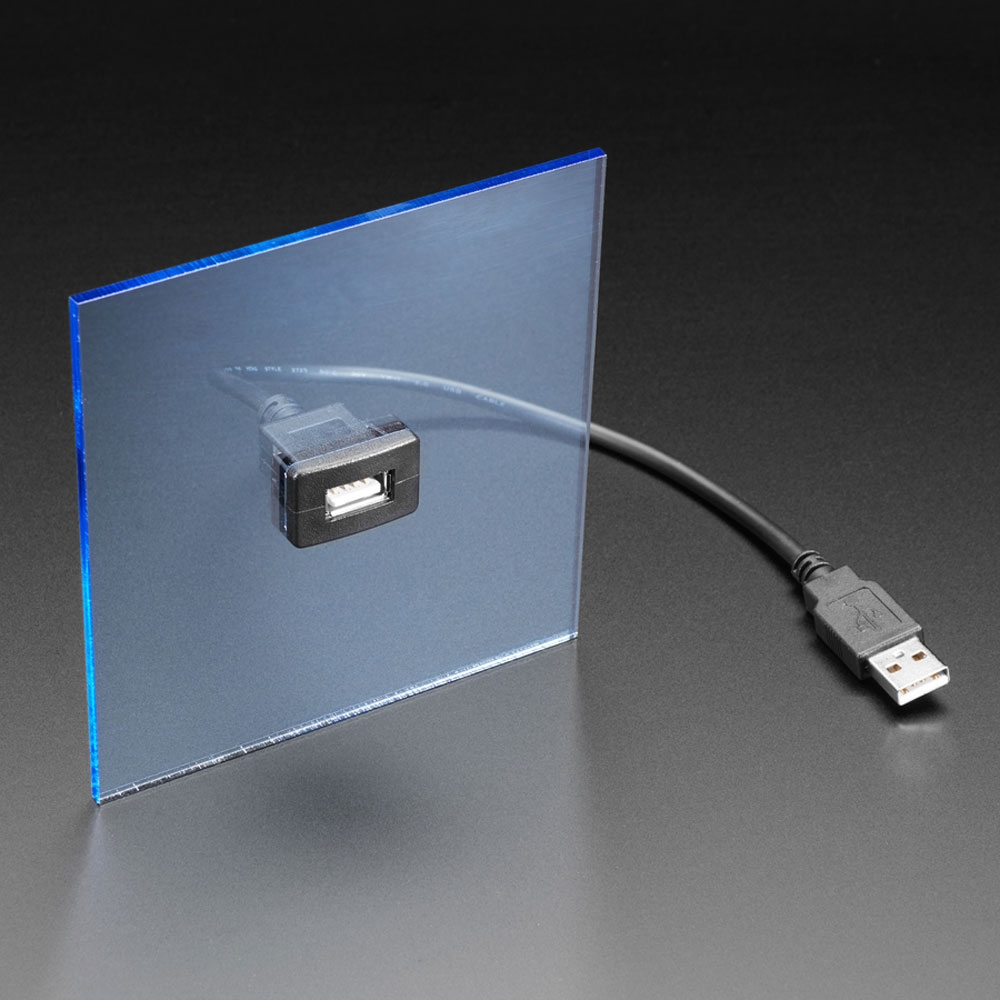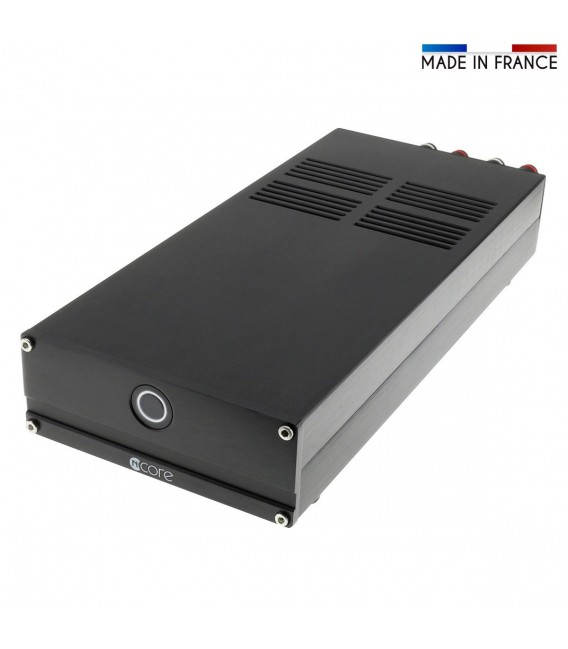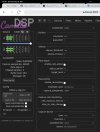After testing the streaming and source switching via FLIRC and OLED, I have taken your advice and removed my NAD pre-amp from the audio chain.
For the recommended OLED I bought a 1 unit half width plastic rack case and mounted the oled and FLIRC on the flat faced back panel.
1U 9.5

www.altronics.com.au
This extension is a Snap-In panel mount, meaning you cut your hole and snap it in - No drilling/screws required! The 30cm cable allows you to attach to your device and have a working usb extension to the external, female USB-A port.

core-electronics.com.au
View attachment 283138
Here is a pic of piCore player with 7" screen sitting on the OLED display case. In piCore player I select player "CDSP-ULMK5" to control Squeezelite feeding CamillaDSP.
The rPi is not screwed down yet and the back of the case is open for ventilation.
The OLED allows 9 characters for display of the input so I used Squeezbox (a deliberate typo} as the name for the Squeezelite process running on the RPi 4 with CamillaDSP.
FLIRC.
I use an old Logitec Squeezebox Boom remote matched to the FLIRC. I made one change to Michael's keymap as I used the red Power button to toggle the Mute function.
On the living room system I have 3 inputs, "NAD Ctl" that uses analog from my NAD preamp, "Squeezbox" which uses the Squeezelite instance feeding CamillaDSP and "TV" for the TV sound through the CamillaDSP. The NAD is only there as a fallback, FM radio is streamed through the Squeezebox server and selected via the PiCore player "Favorites" menu.
Squeezelite
Having built piCore Players for years to stream from my Squeezebox server (LMS), I modified the Squeezelite initscript to include a player name and the modified SB extra args according to those recommended in Archimago's blog. I stream at 96000 with the conversion taking place in the LMS server. One less conversion.
Code:
# Defaults for squeezelite initscript
# sourced by /etc/init.d/squeezelite
# installed at /etc/default/squeezelite by the maintainer scripts
# The name for the squeezelite player (no blanks):
SL_NAME="CDSP-ULMK5"
# ALSA output device:
SL_SOUNDCARD="hw:Loopback,1"
# Squeezebox server (Logitech Media Server):
# Uncomment the next line if you want to point squeezelite at the IP address of
# your squeezebox server. This is usually unnecessary as the server is
# automatically discovered.
#SB_SERVER_IP="192.168.x.y"
# Additional options to pass to squeezelite:
# Please do not include -z to make squeezelite daemonise itself.
#SB_EXTRA_ARGS=""
SB_EXTRA_ARGS="-W -C 30 -r 96000-96000 -R v::4:28:95:105:45"
A blog for audiophiles about more objective topics. Measurements of audio gear. Reasonable, realistic, no snakeoil assessment of sound, and equipment.

archimago.blogspot.com

manpages.ubuntu.com
View attachment 283140
The Motu Ultralite MK5 is sitting on a box that has 6 single end RCA to balanced converters that I built during early testing. The TV analog is converted to balanced using this. The amp on the bottom left is an N-Core from Audiophonics for the bass, the two amps on top are SMSL SH-9 THX headphone amps for mid and high. I made 4 pin XLR to banana plug cables for the SMSL amps.
Has anyone tried any of these small cheap pre amp cards, with OP amp NE5532, from China? They hardly cost any money at all but are they ok? Attach some pictures of what it looks like (took some at random)...

www.audiosciencereview.com
The Audiophonics PAS-125NC incorporates a Hypex Ncore NC122MP power amplifier module. This is a solid base to build a powerful stereo HiFi system, capable of delivering 2x75W under 8Ω.

www.audiophonics.fr
I converted this amp to balanced input by replacing the RCA sockets with a TRS sockets.
This is a review and detailed measurements of the SMSL SH-9 THX headphone amplifier. Product was just released and will be available shortly. The sample I have was kindly sent to me by SHENZHENAUDIO and costs US $290. The market for high performance headphone amplifiers has become quite...

www.audiosciencereview.com






